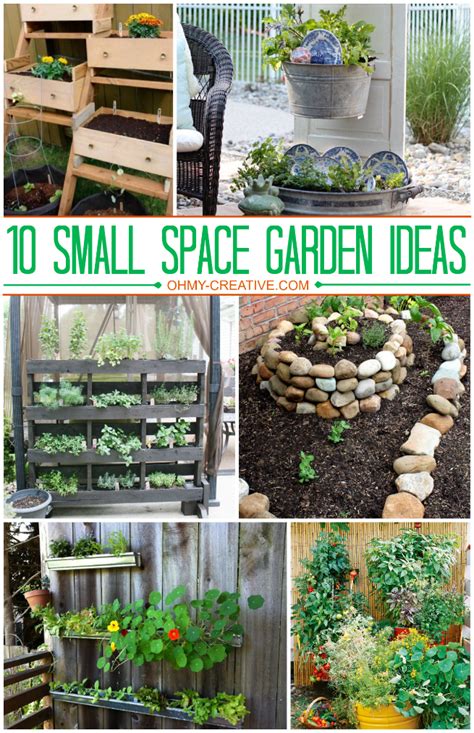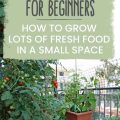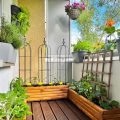Creative Solutions for Gardening Joy in Small Spaces: Tips for Urban Gardeners
Gardening can be a relaxing and rewarding hobby, but when space is limited, especially in urban environments, it requires a bit of creativity. Whether you have a tiny balcony, a small backyard, or no outdoor area at all, it’s still possible to cultivate your own lush, vibrant garden. This guide will explore various small space gardening techniques, focusing on maximizing your enjoyment while working with the space you have.
Key Concepts in Small Space Gardening
Before diving into practical tips, it’s essential to understand a few fundamental concepts in urban gardening. These will serve as the foundation for any small-scale gardening effort:
- Vertical Gardening: Maximizing vertical space with shelving, hanging baskets, and trellises.
- Container Gardening: Utilizing pots, containers, and raised beds to grow plants anywhere.
- Companion Planting: Planting species that benefit each other in close proximity.
- Microclimates: Understanding how factors like sunlight, wind, and shade affect different areas of your space.
Historical Context of Urban Gardening
Urban gardening isn’t a new trend; it has historical roots dating back to ancient civilizations. In medieval times, herbs and vegetables were grown in small courtyard gardens. In the 19th century, urbanization led to the rise of allotment gardens, allowing city dwellers to cultivate crops on small plots of land.
Modern container gardening techniques evolved in the 20th century as urban areas became denser, leading to creative ways of growing plants in limited spaces. From window boxes to hanging pots, gardeners adapted to constrained environments. Today, small-space gardening is booming, fueled by a desire for organic food, sustainability, and outdoor relaxation spaces in urban settings.
Current State Analysis: How Urban Dwellers Are Gardening in Small Spaces
Today’s urban gardeners are using a wide range of strategies to bring nature into their homes. Balcony design is a popular option, with people turning balconies into miniature oases by using clever storage and gardening hacks to save space. Vertical gardens, hanging pots, and multi-tiered shelves are all common solutions to maximize growing capacity in tight quarters.
Innovative techniques, such as hydroponic systems and self-watering containers, allow city dwellers to grow more with less effort and water. Community gardens also provide urban residents with shared space to plant and harvest crops.
Practical Applications: Gardening Tips for Small Spaces
Now that we’ve covered the context and key concepts, here are some practical gardening tips to help you start a flourishing small garden:
- Use Lightweight Containers: Choose lightweight, mobile containers that are easy to move around your balcony or indoor space as sunlight shifts.
- Maximize Vertical Space: Use vertical shelving, trellises, and hanging planters to take advantage of unused wall space.
- Go Compact with Plants: Choose dwarf or miniature varieties of plants that are specifically bred for container gardening and small spaces.
- Grow in Layers: Stagger pots and planters on different levels to create a multi-tiered garden and ensure all plants receive sufficient sunlight.
- Utilize Microclimates: Take note of areas where plants might benefit from more sun, shade, or wind protection and organize your space accordingly.
Case Studies: Successful Small-Space Gardening Examples
To inspire your gardening efforts, here are a few real-world examples of urban gardening projects that have successfully tackled the challenge of limited space:
| Location | Space Type | Solution |
|---|---|---|
| Brooklyn, NY | Tiny Balcony | Used vertical gardening and compact containers to grow herbs, tomatoes, and flowers. |
| London, UK | Shared Rooftop | Converted rooftop into a community garden with raised beds and shared irrigation. |
| Tokyo, Japan | Apartment Windowsill | Grew herbs and small vegetables in custom-designed planter boxes. |
Stakeholder Analysis: Who Benefits from Small-Space Gardening?
Small-space gardening benefits a wide variety of stakeholders:
- Homeowners and Renters: Gain access to fresh herbs, vegetables, and flowers, even without a yard.
- Communities: Shared gardens foster collaboration and provide green spaces in urban areas.
- Environmental Advocates: Promotes sustainability and reduces food miles for those growing their own produce.
Implementation Guidelines: How to Start Your Own Small-Space Garden
To begin your small-space garden, follow these steps:
- Assess Your Space: Measure the available area and note sun exposure, wind patterns, and existing decor.
- Choose the Right Containers: Select pots and containers that fit your space while providing adequate drainage and root space.
- Pick Plants Suited to Your Space: Focus on herbs, dwarf varieties, or climbing plants that thrive in limited areas.
- Create a Watering Schedule: Consistent care is key in small-space gardening where soil dries out quickly.
- Experiment with Layouts: Play with different layouts to maximize both visual appeal and plant health.
Ethical Considerations of Urban Gardening
Urban gardening often raises questions about the ethics of space use, water conservation, and pesticide use. Ensuring your small garden is both sustainable and responsible involves making choices that minimize water usage, avoiding harmful pesticides, and considering the potential impact on neighbors and local wildlife.
Limitations and Future Research
While small-space gardening is accessible and rewarding, there are limitations. Restricted space can limit the variety and quantity of plants that can be grown. Furthermore, certain crops, such as large root vegetables, are not ideal for container gardening. Future research may focus on developing more compact, high-yield plants specifically designed for small spaces, as well as advancements in self-sustaining garden systems.
Expert Commentary on the Future of Small-Space Gardening
Experts agree that small-space gardening is set to play a major role in urban sustainability. With innovations in hydroponics, vertical farming, and urban gardening techniques, city dwellers will have even more opportunities to engage in gardening. As balcony design and community gardening initiatives grow in popularity, the next wave of small-space gardeners can expect increased accessibility and support for their efforts.


